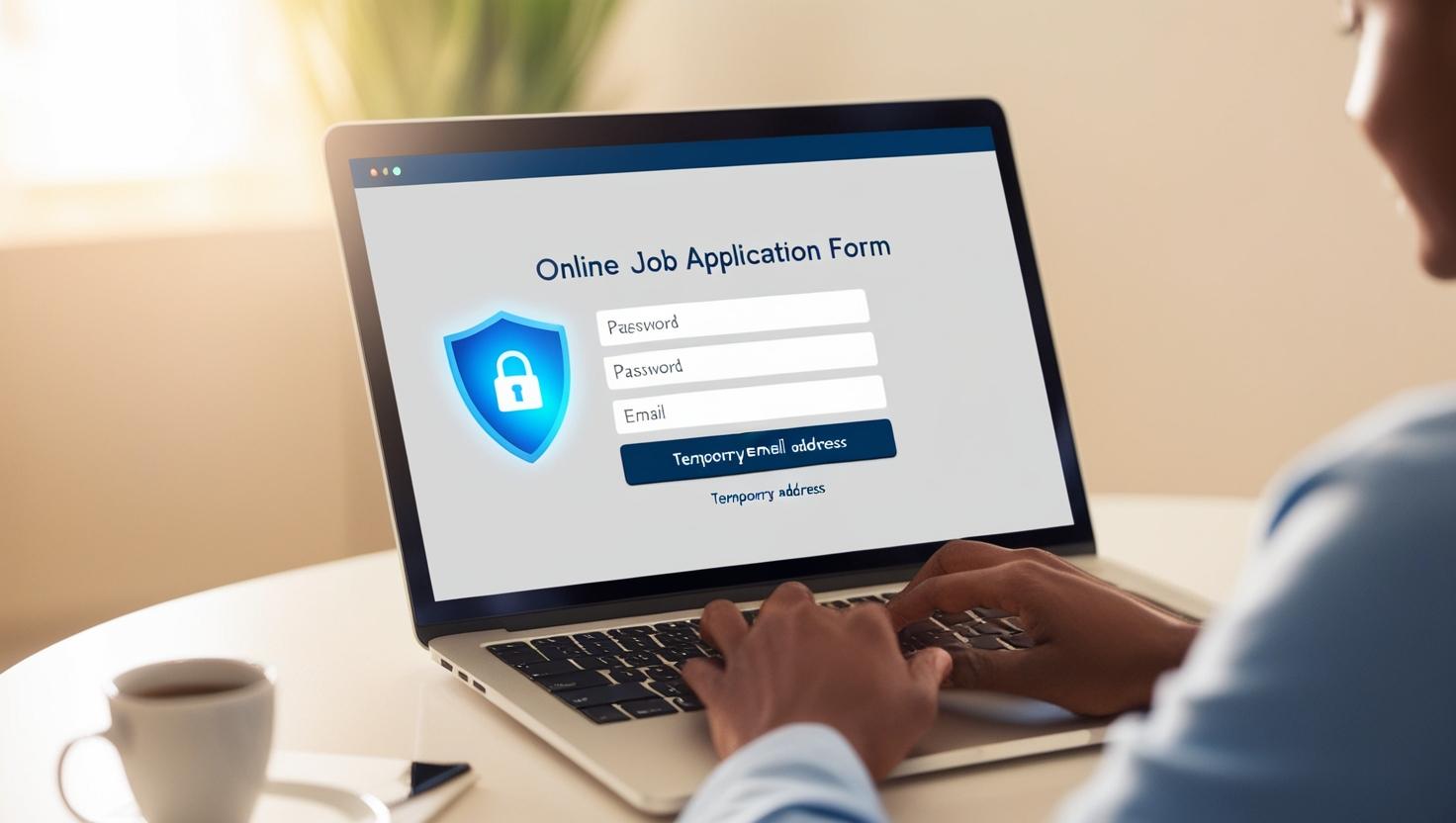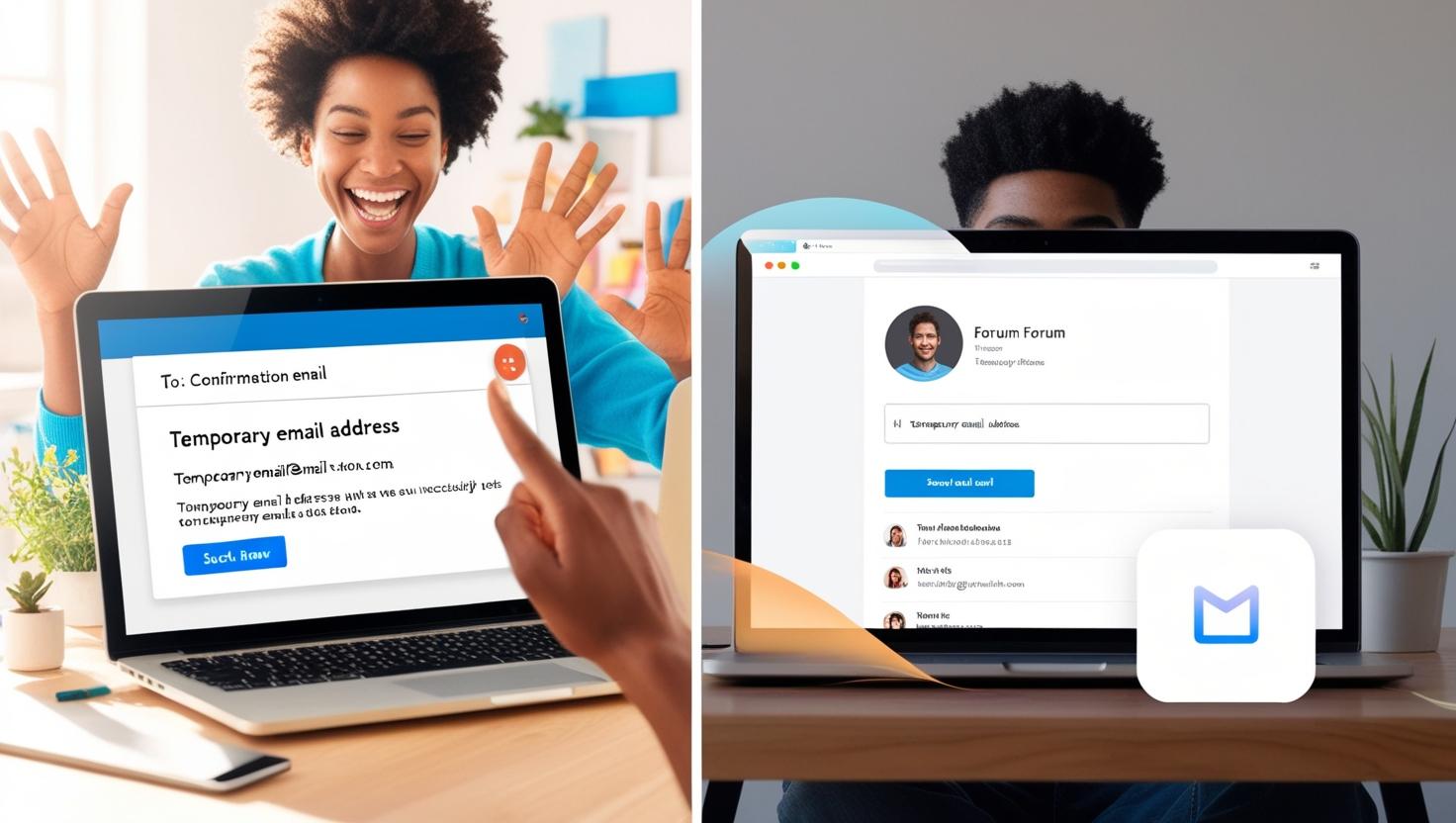Email Authentication Systems: SPF, DKIM, and DMARC in Temporary Email Services

Understanding the critical authentication protocols protecting email communications
The Trust Paradox: Authentication in Ephemeral Communications
In the world of digital communications, trust is both essential and elusive. Email, despite being one of our oldest digital communication channels, faces a fundamental challenge: how do we verify that a message truly comes from its claimed source? This challenge becomes even more complex in the context of temporary email services like 15MinMail.
Temporary email addresses exist in a unique position within the email ecosystem. They're designed to be ephemeral and privacy-focused, yet they must still interact with the broader email infrastructure that increasingly relies on sophisticated authentication mechanisms to combat spam, phishing, and other malicious activities.
This creates what we might call the "trust paradox" of temporary email services: how do these intentionally transient systems integrate with authentication frameworks designed for persistent identity verification? The answer lies in understanding the technical foundations of modern email authentication systems and how innovative services adapt these protocols to their unique requirements.
The Authentication Triad: SPF, DKIM, and DMARC Explained

The three pillars of modern email authentication working in concert
Modern email authentication relies primarily on three complementary protocols that work together to verify different aspects of an email's legitimacy. Each addresses a specific vulnerability in the email delivery system, and together they form a comprehensive authentication framework.
Sender Policy Framework (SPF): Validating the Sending Server
SPF represents the first line of defense in email authentication. Developed in the early 2000s and standardized in 2014 through RFC 7208, SPF allows domain owners to specify which mail servers are authorized to send email on behalf of their domain.
How SPF Works
The mechanics of SPF are relatively straightforward:
Domain Publication: The domain owner publishes a special DNS TXT record listing the IP addresses or server names authorized to send email for that domain.
Receiver Verification: When an email server receives a message, it checks the sender's domain and queries DNS for the domain's SPF record.
IP Comparison: The receiving server compares the sending server's IP address against the authorized list in the SPF record.
Policy Application: Based on the comparison result, the receiver applies the policy specified in the SPF record (typically to accept, flag, or reject the message).
For example, a basic SPF record might look like:
v=spf1 ip4:192.168.1.1 ip4:192.168.1.2 -all
This record states that only the servers with IP addresses 192.168.1.1 and 192.168.1.2 are authorized to send email for the domain, and all others should be rejected.
SPF Limitations
While effective at its specific purpose, SPF has notable limitations:
- It only validates the envelope sender (MAIL FROM), not the "From:" header visible to users
- It breaks with email forwarding, as the forwarder's IP won't match the original domain's SPF record
- It doesn't verify the content of the message itself
These limitations necessitate additional authentication mechanisms, which is where DKIM enters the picture.
DomainKeys Identified Mail (DKIM): Cryptographic Content Verification
DKIM addresses SPF's content verification gap by implementing cryptographic signatures that verify both the sender's domain and the integrity of the message content.
How DKIM Works
DKIM employs public-key cryptography through the following process:
Key Generation: The domain owner generates a public-private key pair and publishes the public key in their DNS records.
Message Signing: When sending an email, the outgoing mail server uses the private key to generate a digital signature based on selected headers and the message body.
Signature Attachment: This signature is added to the email as a "DKIM-Signature" header.
Receiver Verification: The receiving server extracts the signature and the claimed domain, retrieves the public key from DNS, and verifies the signature against the received message.
Integrity Confirmation: A successful verification confirms both the domain ownership and that the message hasn't been altered in transit.
A DKIM signature header contains several components, including the signing domain, the selector (identifying which key to use), the headers that were signed, and the cryptographic signature itself.
DKIM Advantages and Challenges
DKIM offers significant advantages:
- It survives forwarding since the signature remains with the message
- It verifies message integrity, detecting any tampering during transit
- It provides non-repudiation, as only the holder of the private key could have signed the message
However, DKIM implementation presents challenges:
- Key management becomes critical, requiring secure storage of private keys
- Determining which headers to sign involves balancing security with practicality
- Signature breakage can occur with certain types of message modification
As our decoding email headers article explains, these signatures form a critical part of the email header information that security systems analyze.
Domain-based Message Authentication, Reporting, and Conformance (DMARC): Unifying the Framework
DMARC completes the authentication triad by building upon SPF and DKIM, adding clear policies for handling authentication failures and establishing a reporting mechanism for domain owners.
How DMARC Works
DMARC operates through several interconnected mechanisms:
Policy Publication: Domain owners publish a DMARC policy in DNS specifying how receivers should handle messages that fail authentication.
Identifier Alignment: DMARC introduces the concept of "alignment," requiring that the domain in the From header matches the domain validated by SPF or DKIM.
Failure Handling: The policy indicates whether failed messages should be delivered, quarantined (typically to spam folders), or rejected entirely.
Reporting System: Receiving servers can send aggregate and forensic reports back to the domain owner about authentication results.
A typical DMARC record might look like:
v=DMARC1; p=quarantine; pct=100; rua=mailto:reports@example.com
This record instructs receivers to quarantine 100% of failing messages and send aggregate reports to reports@example.com.
The Power of DMARC
DMARC's significance comes from how it addresses previous limitations:
- It connects technical authentication (SPF/DKIM) with the human-visible From address
- It provides clear handling instructions for receivers
- It establishes a feedback loop allowing domains to monitor authentication results
- It creates a framework for domain owners to gradually implement stronger policies
As detailed in our email security 101 guide, these protocols collectively form the backbone of modern email security infrastructure.
The Unique Challenges for Temporary Email Services

Navigating the complex authentication landscape with temporary services
Implementing email authentication for temporary email services presents unique challenges not faced by traditional email providers. These challenges stem from the fundamental nature of disposable email services and require innovative technical solutions.
1. Domain Reputation Management
Perhaps the most significant challenge involves domain reputation. Authentication systems like SPF, DKIM, and DMARC help establish domain reputation over time, but temporary email services face several complications:
Reputation Building: Traditional email domains build reputation gradually through consistent good behavior, but temporary email domains may be viewed suspiciously due to their transient nature.
Blocklist Vulnerability: Domains associated with temporary email services are often preemptively blocklisted by receiving systems, regardless of authentication status.
Shared Domain Issues: When many users share the same domain for temporary addresses, problematic behavior by some users can impact deliverability for all.
These reputation challenges require sophisticated domain management strategies, including domain rotation, reputation monitoring, and careful IP address management.
2. Technical Implementation Complexities
The technical architecture of temporary email services creates specific implementation challenges:
Key Management at Scale: Managing DKIM signing keys for potentially thousands of domains requires robust key management infrastructure.
Dynamic DNS Updates: Frequently updating SPF, DKIM, and DMARC records across multiple domains necessitates automated DNS management systems.
Forwarding Complications: Many temporary email services offer forwarding capabilities, which can break SPF authentication and require careful handling.
High-Volume Processing: Signing and verifying high volumes of transient messages demands efficient cryptographic implementation.
As our article on SMTP protocols in temporary email explains, these services must balance standard protocol compliance with their unique operational requirements.
3. Policy Enforcement Dilemmas
DMARC policy enforcement creates particular challenges for temporary email providers:
Appropriate Policy Selection: Determining whether to implement none, quarantine, or reject policies requires balancing deliverability against security.
Reporting Infrastructure: Processing incoming DMARC reports for multiple domains necessitates scalable analytics systems.
Alignment Issues: Ensuring proper alignment between visible From addresses and authenticated domains becomes complex with dynamically generated addresses.
Receiver Skepticism: Some receiving systems apply stricter scrutiny to messages from known temporary email domains regardless of authentication status.
Navigating these challenges requires both technical sophistication and strategic decision-making about how authentication mechanisms are implemented.
How 15MinMail Implements Authentication Standards

Robust authentication systems ensuring legitimate message delivery
At 15MinMail, we've developed a comprehensive approach to email authentication that addresses the unique challenges of temporary email services while maintaining compatibility with global authentication standards.
Our Multi-Layered Authentication Architecture
Our implementation follows a multi-layered strategy:
1. Domain Infrastructure and SPF Implementation
We maintain a carefully managed pool of domains with meticulously configured SPF records:
Comprehensive Server Listing: Our SPF records include all potential sending servers to prevent legitimate messages from failing authentication.
Regular Updates: We employ automated systems to update SPF records as our infrastructure evolves, ensuring continuous alignment between our sending servers and published policies.
Selective Mechanisms: Rather than using broad include mechanisms that could introduce vulnerabilities, we specifically enumerate authorized servers.
Appropriate Policy Strength: We implement SPF policies that balance security with practical deliverability requirements.
This foundation ensures that messages sent from our systems can be properly validated by receiving mail servers checking SPF records.
2. DKIM Signing Infrastructure
Our DKIM implementation focuses on scalability and security:
Robust Key Management: We employ a sophisticated key rotation system that regularly updates DKIM keys while maintaining backward compatibility during transition periods.
Selective Header Signing: We carefully select which headers to include in DKIM signatures, balancing comprehensive coverage against potential breakage scenarios.
Multiple Selector Support: By implementing multiple DKIM selectors, we can smoothly transition between keys and accommodate different signing requirements.
Cryptographic Best Practices: We utilize strong key lengths and modern algorithms to ensure our signatures remain cryptographically sound.
This approach ensures that messages maintain verifiable integrity from our servers to the recipient's inbox.
3. DMARC Policy and Monitoring
Our DMARC implementation completes the authentication framework:
Progressive Policy Implementation: We employ a graduated approach to DMARC policies, starting with monitoring and progressively strengthening enforcement as we confirm deliverability impacts.
Comprehensive Reporting Infrastructure: We've built scalable systems to collect, analyze, and act upon DMARC reports, providing visibility into authentication results across our domain portfolio.
Alignment Optimization: We ensure proper alignment between visible sender addresses and authenticated domains through careful technical architecture.
Feedback Loop Integration: Authentication failures trigger internal alerts and remediation processes to address potential issues before they impact users.
This comprehensive approach allows us to maintain deliverability while providing the security benefits of modern authentication standards.
Balancing Authentication with Privacy
A critical consideration in our authentication implementation is maintaining the privacy benefits that make temporary email valuable in the first place. We achieve this balance through several mechanisms:
Minimal Information Disclosure: Our authentication implementations reveal only the technical information necessary for validation, without exposing user-identifying details.
Separate Tracking Domains: We maintain distinct domains for authentication purposes versus user-facing email addresses, creating technical separation that enhances privacy.
Limited Retention Policies: Authentication logs and related data follow strict retention policies aligned with our privacy commitment.
Transparent Implementation: We maintain clear documentation about our authentication practices, allowing privacy-conscious users to make informed decisions.
This careful balance ensures that our authentication systems enhance security without compromising the core privacy benefits of our service.
The Future of Email Authentication for Temporary Services

Evolving standards and emerging technologies shaping email verification
Email authentication continues to evolve, with several emerging trends likely to impact temporary email services in the coming years:
1. Stricter Enforcement Regimes
The email ecosystem is moving toward more rigorous authentication requirements:
Mandatory DMARC: Major mailbox providers are increasingly requiring valid DMARC policies for successful inbox delivery.
Reject Policy Expectations: The industry is gradually shifting toward expecting reject policies (p=reject) rather than quarantine or none.
Authentication Indicators: User interfaces are beginning to display authentication status more prominently, potentially affecting how users perceive messages.
Reputation Amplification: Authentication results increasingly influence reputation systems, with properly authenticated messages receiving preferential treatment.
These trends will require temporary email services to invest even more in robust authentication infrastructure to maintain deliverability.
2. Emerging Authentication Technologies
Several new technologies are extending the authentication framework:
Brand Indicators for Message Identification (BIMI): This standard allows domain owners to display brand logos in supporting email clients when messages pass DMARC authentication.
Authenticated Received Chain (ARC): This protocol preserves authentication results across forwarding scenarios, addressing a key limitation of current systems.
MTA-STS and SMTP TLS Reporting: These standards enhance transport security by allowing domains to specify TLS requirements and receive reports about TLS compliance.
DKIM Crypto Advancements: Ongoing cryptographic improvements will require services to update signing algorithms and key strengths.
Temporary email providers will need to evaluate and potentially implement these technologies to remain compatible with evolving standards.
3. Authentication for Non-Traditional Messaging
As messaging evolves beyond traditional email, authentication systems are adapting:
API-Based Communication: Authentication for programmatic email sending through APIs requires specialized implementation approaches.
Mobile Messaging Integration: The boundaries between email and other messaging systems are blurring, creating new authentication challenges.
Decentralized Identity Systems: Blockchain and other decentralized technologies are beginning to influence how digital messages are authenticated.
Cross-Protocol Authentication: Emerging standards aim to provide consistent authentication across different communication channels.
These developments will shape how temporary email services implement authentication in increasingly diverse communication environments.
Practical Implications for Users

What authentication means for temporary email users
While authentication systems operate largely behind the scenes, they have several practical implications for users of temporary email services:
Deliverability Expectations
Users should understand how authentication affects message delivery:
Varied Reception: Messages sent from temporary addresses may experience different delivery success rates depending on the recipient's authentication requirements.
Folder Placement: Authentication results influence whether messages land in the inbox, promotions tab, or spam folder.
Service Limitations: Some services with strict authentication requirements may reject messages from temporary domains entirely.
Forwarding Considerations: When forwarding from temporary to permanent addresses, authentication complexities can affect delivery success.
Understanding these factors helps users set appropriate expectations when using temporary email services for different purposes.
Security Implications
Authentication also impacts security considerations:
Spoofing Protection: Strong authentication makes it more difficult for malicious actors to impersonate temporary email domains.
Phishing Awareness: Users should remain aware that while authentication verifies domain legitimacy, it doesn't guarantee the trustworthiness of message content.
Trust Indicators: Some email clients display authentication results through visual indicators that can help users assess message legitimacy.
Service Selection: The authentication practices of different temporary email providers may influence their security posture and trustworthiness.
As our digital hygiene article emphasizes, understanding these security aspects helps users make informed decisions about their communications.
Privacy Considerations
Authentication intersects with privacy in several ways:
Metadata Exposure: Authentication systems necessarily expose certain technical details about message origins.
Provider Practices: Different temporary email providers implement authentication with varying attention to privacy implications.
Tracking Potential: Some authentication implementations may enable certain types of message tracking that privacy-conscious users should understand.
Anonymity Limitations: Strong authentication can sometimes work against complete anonymity, creating a balance that users should consider.
These considerations highlight why it's important to choose temporary email providers that thoughtfully implement authentication with privacy in mind.
Conclusion: Authentication as a Foundation for Trust
Email authentication systems—SPF, DKIM, and DMARC—represent the technical foundation of trust in digital communications. For temporary email services, implementing these standards presents unique challenges but remains essential for maintaining deliverability, security, and integration with the broader email ecosystem.
At 15MinMail, we've developed sophisticated approaches to authentication that balance technical requirements with our commitment to privacy and usability. By maintaining robust authentication infrastructure, we ensure that our temporary email addresses function reliably while providing the privacy benefits our users expect.
As authentication standards continue to evolve, we remain committed to adapting our systems to maintain this critical balance. The future of email authentication will likely bring both challenges and opportunities for temporary email services, and we're dedicated to staying at the forefront of these developments.
Whether you're using temporary email for online shopping, protecting your primary inbox, or any of the many practical applications these services offer, you can trust that robust authentication systems are working behind the scenes to ensure your messages reach their destination securely and reliably.